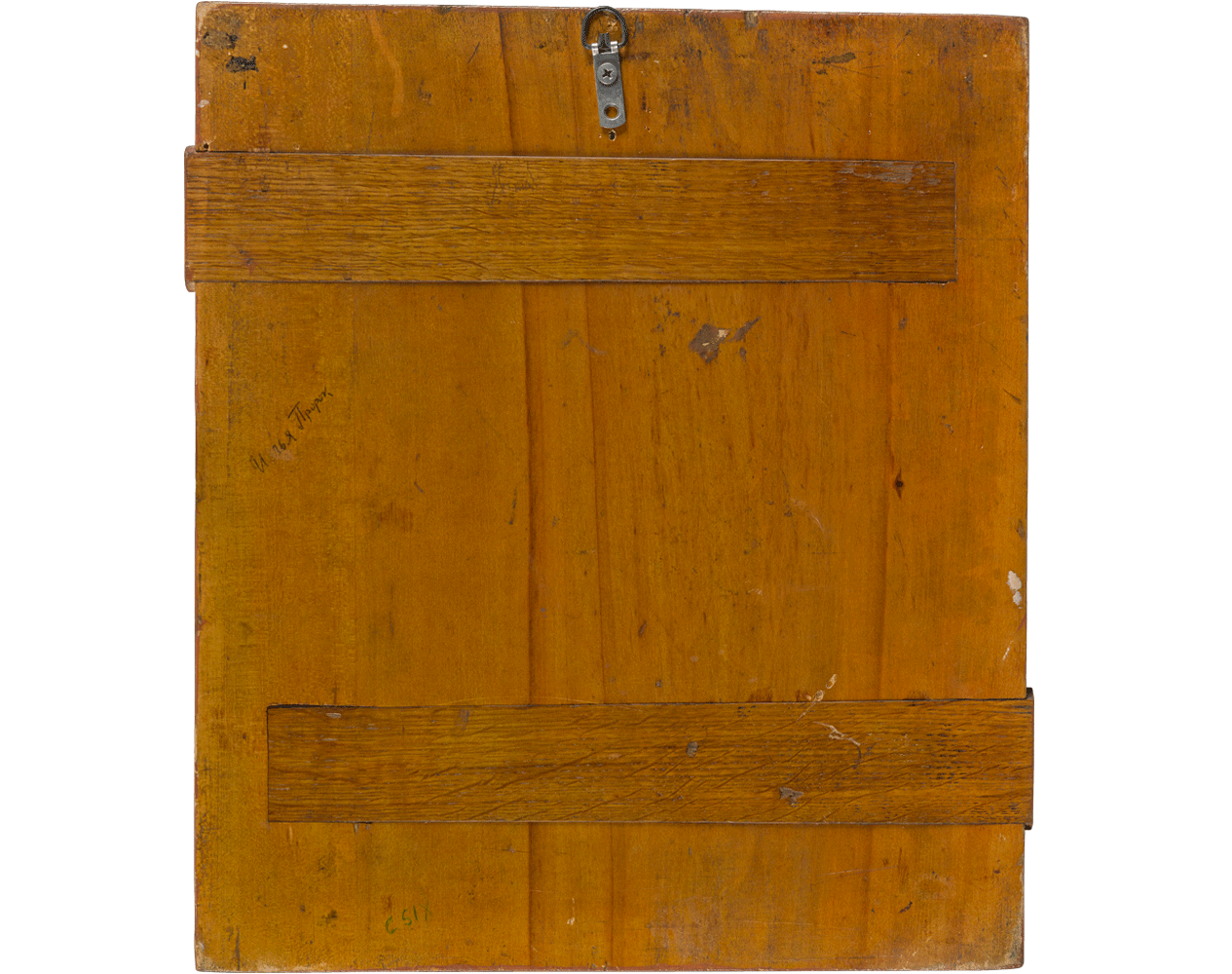Painted in the miniature style of Mstera school with golden haloes and pleats standing out against the saturated colours, the icon depicts scenes from the life of the Old Testament prophet Elijah. The composition includes several different events related together in a continuous narrative.
The central scene, dominated by the oversized figure of the prophet, shows Elijah fed by a raven. It depicts Elijah as an elderly man with long grey hair and beard seated on a large stone at the entrance of a cave of Mount Horeb. He turns his head towards the raven carrying food to him (1 Kings 19:11-13).
The smaller scenes surrounding this image depict the final years of Elijah’s life. The image to the left is the earliest in the narrative. It shows Elijah’s competition with the priests of Baal, event told in 1 Kings 18:20-40: the saint is represented praying near a fire. The lower-left front register depicts Elijah sleeping under a broom tree and being awakened by an angel who brings him bread to sustain him in his monastic exploit. In the lower right scene Elijah is dividing the waters of the river Jordan: when the prophet and his disciple Elisha approached the river Elijah rolled up his mantle to strike the water so that the two of them could cross to the opposite bank. The upper part of the composition is occupied by the fiery vision of a chariot carried by four horses elevating the prophet to heavens. The prophet throws his mantle to Elisha depicted to the right stretching his arms to receive it. In the upper left corner appears the Lord Sabaoth emerging through the open heavens and blessing Elijah with both hands. The background is treated as a rocky landscape scattered with sparse vegetation. The upper border bears a calligraphic inscription in Old Slavonic reading: ‘Fiery Ascension of the Saint Prophet Elijah‘.
The figure of Elijah, one of the most venerated Old Testament prophets, equally is important to Judaism, Christianity and Islam. The prophet lived in the first half of the 9th century B.C. in the Kingdom of Israel at that ruled by a pagan dynasty that worshipped the idol Baal. Elijah defended the worship of Yahweh. At the end of his terrestrial life, the prophet was taken up to heaven in a chariot of fire. Elisha, his disciple, witnessed the event and took up the prophet’s mantle which fell as he ascended. Depictions of the ascension of the prophet Elijah in a fiery chariot are fairly common. The iconography of the subject is based on the Book of Kings (1 King. 1:8-25; 2 King. 2:9-14). In the Second Book of Kings, we read: ‘then it happened… that suddenly a chariot of fire appeared with horses of fire, and separated the two of them; and Elijah went up by a whirlwind into heaven‘ “(2 King. 2:11).
Elijah’s feast day is celebrated on July 20th.













